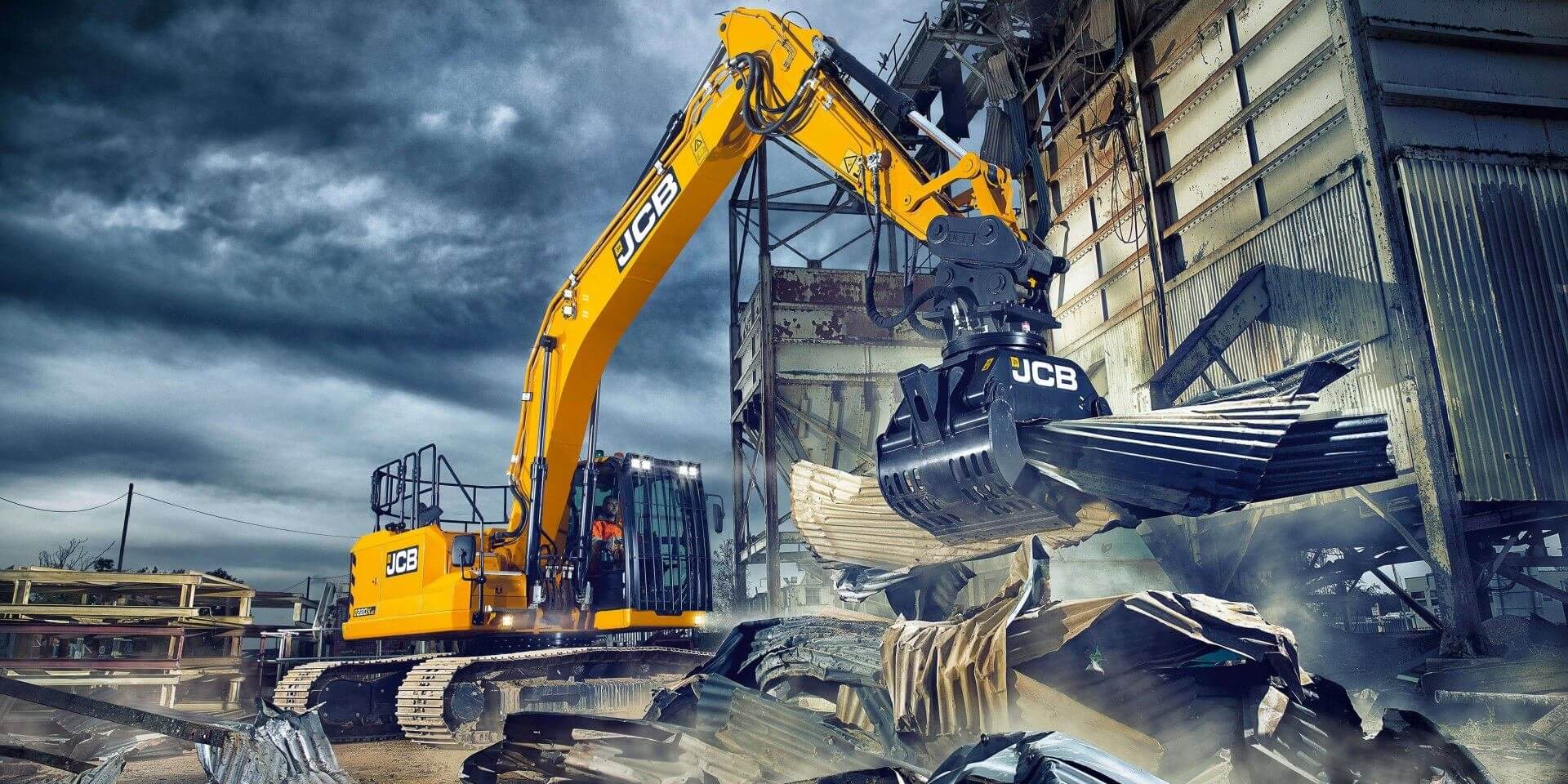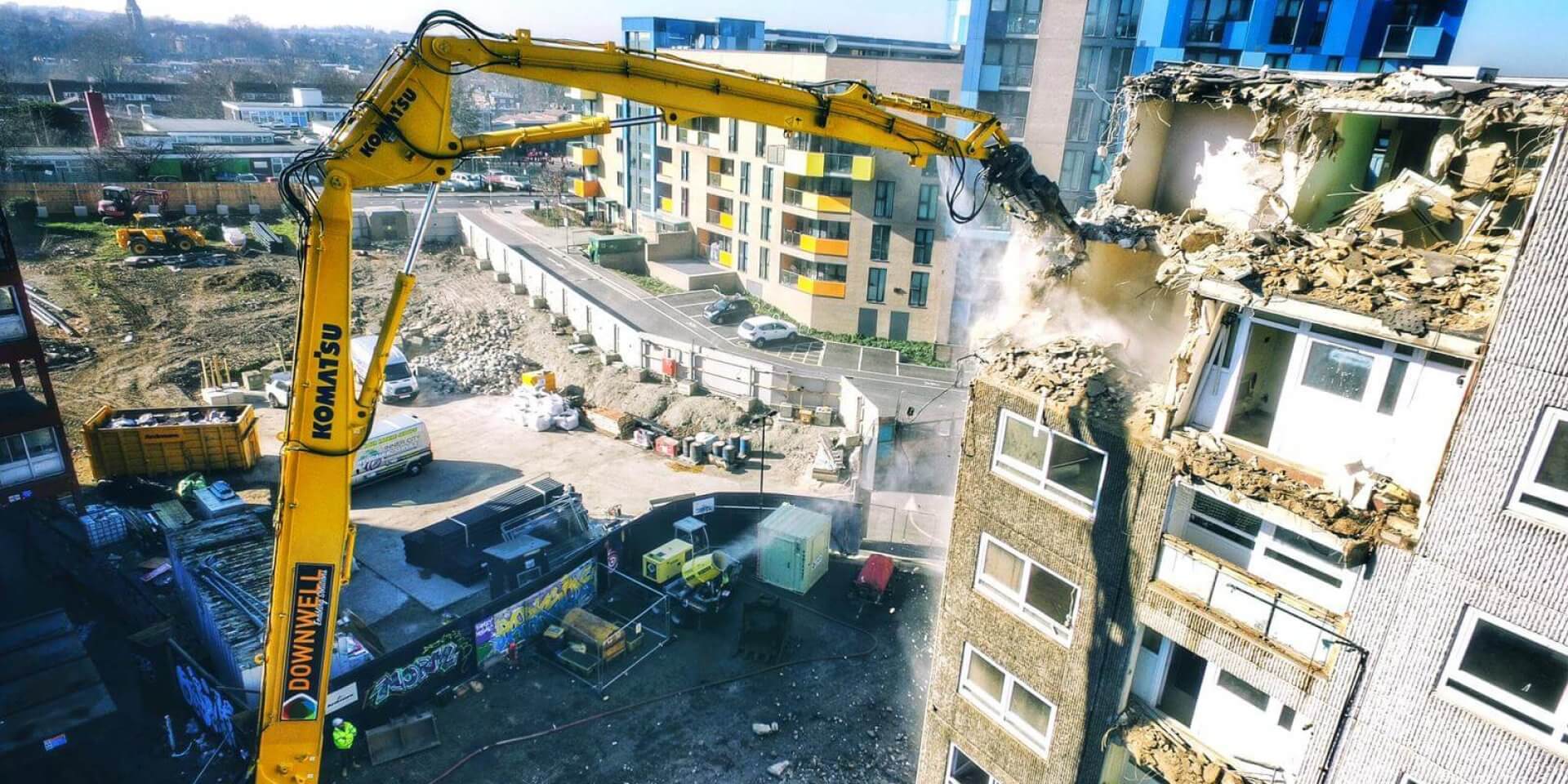Hydraulic crane equipped with wrecking ball tackles silo demolition.

But for the life of us, we can’t remember ever seeing a wrecking ball hitched to a hydraulic crane before. Until now.
For that s precisely the demolition method selected to demolish the Taylor, Smith & Taylor silos in Chester, West Virginia.
The silo work, originally scheduled to start in August, was delayed because samples of soil from underground tanks at the base of the silos had to be tested for anything toxic, Six said. Officials were awaiting the results and final approval from the West Virginia Department of Environmental Protection.
“We had to get sampling done from underneath the tanks to make sure nothing had leaked out into the soil,” Six said. “The results came back clean, so they said, ‘Go ahead and take them down.'”
The silos are at least half full with powdered clay that was used in the pottery-making process. Officials had hoped the clay could be reused but found that it couldn’t because it was in a hardened form, Six said.
Once the silos are down, the crushed concrete and clay will be used as filler material on the site, Six said. Other materials, including bricks, concrete, sandstone, steel beams and wood beams, have either been hauled away for reuse or kept on site as clean fill.
More than 254 loads of asbestos-containing material have been hauled away and taken to a certified landfill since cleanup began in April. Officials also believe that some of the riverbank soil is contaminated with lead, requiring further remediation with the help of a $200,000 grant from the U.S. Environmental Protection Agency.
Read more here.





